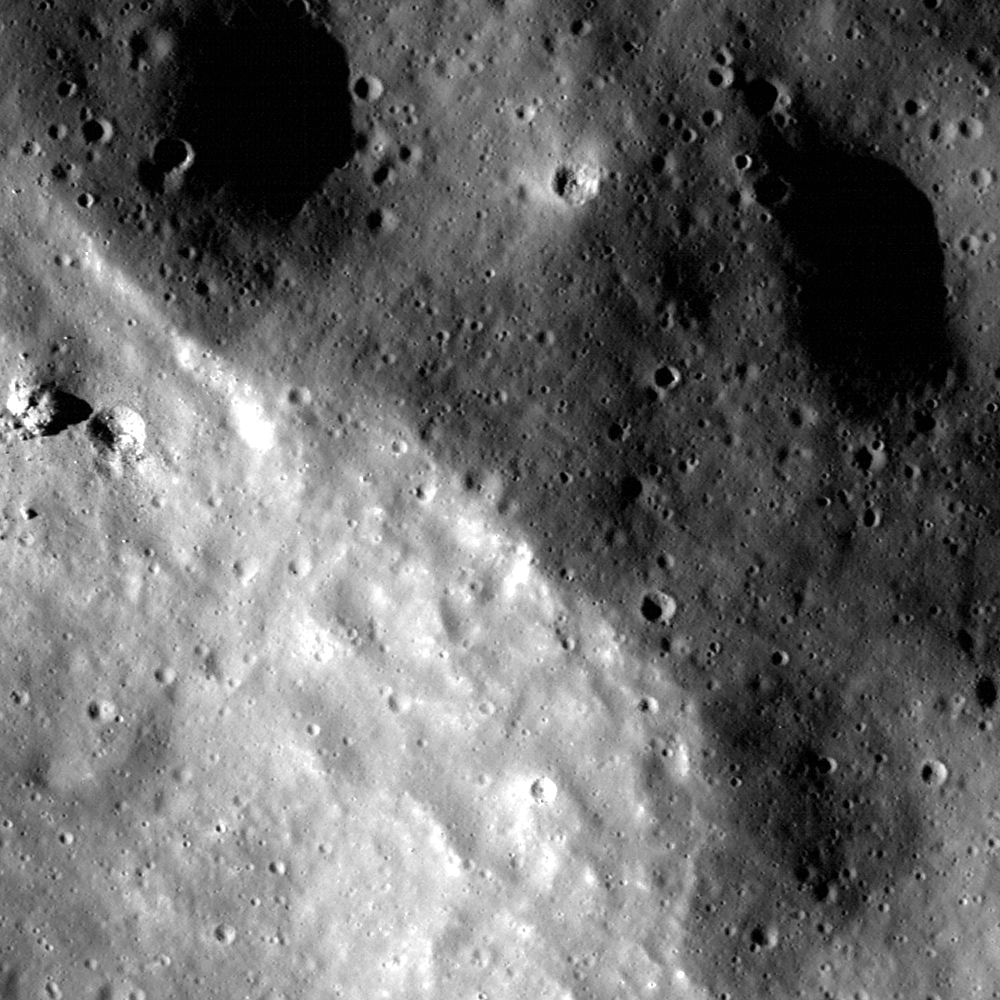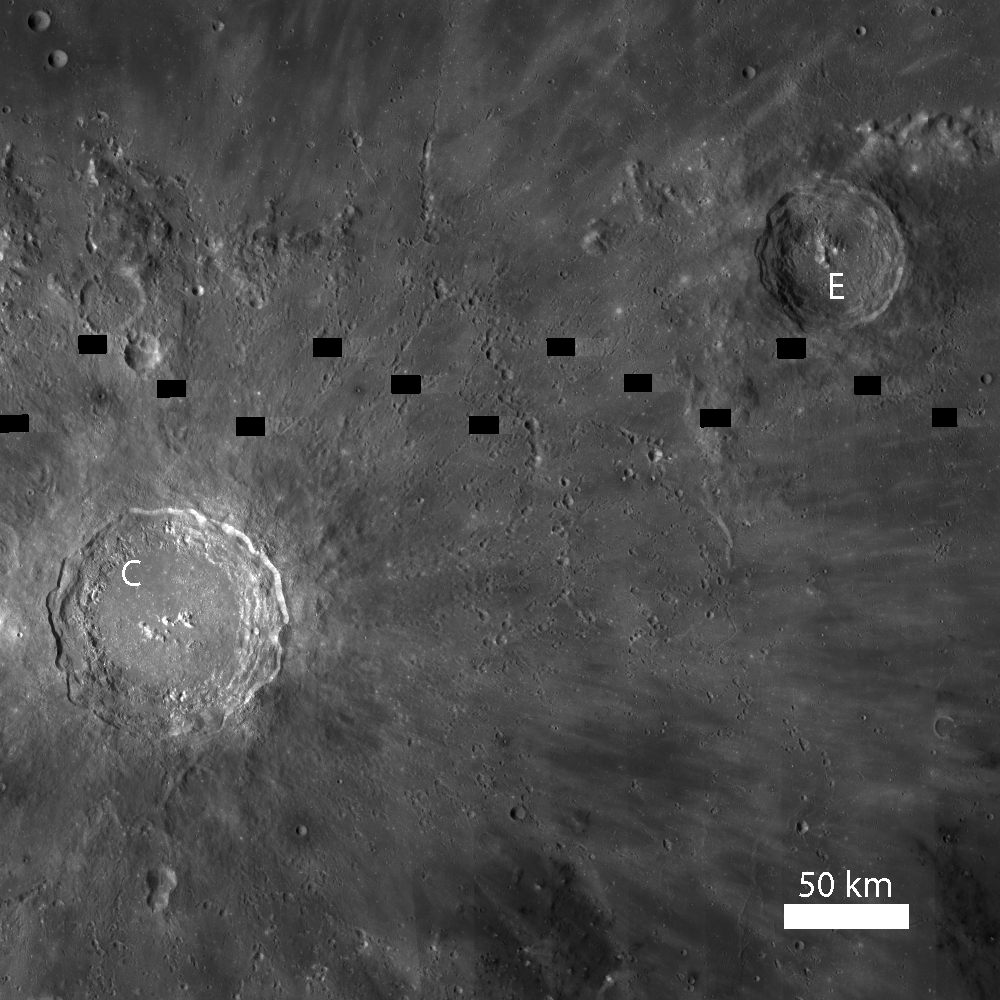
Eratosthenes crater is found in the central nearside, east-northeast of Copernicus crater (latitude 14.5°, longitude 348.7°). Eratosthenes is named for the ancient Greek who first estimated the Earth's circumference around 240 BC. In the 1960's, Eratosthenes crater was identified by Gene Shoemaker and Robert Hackman as a key stratigraphic marker delimiting the longest period (Eratosthenian) of the lunar timescale, thought to range from about 3.2 to 1.1 billion years old! However we have very few absolute age dates (from samples) for this period in the lunar time scale, thus its actual age is not well constrained. Sampling key Eratosthenian units (craters, mare, domes, etc) is a prime goal of future lunar exploration.
Like Copernicus, Eratosthenes has a well defined rim, walls, and a central peak. However, it lacks rays, and in fact is crossed by rays from Copernicus crater. Shoemaker and Hackman invoked the geologic law of superposition, which says that younger layers lie on top of older layers, and established Eratosthenes to be the older of the two craters, and thus the Eratosthenian period is the second youngest geologic age on the Moon.
Take a look at the features in Eratosthenes in the NAC Image!
Read the original Shoemaker and Hackman paper and a enjoy high resolution scan of the landmark map and cross section that outlined their conclusions:
http://ser.sese.asu.edu/MOON/IAU/shoemaker_hackman_1960.pdf
http://ser.sese.asu.edu/MOON/IAU/shoe_foldout600dpi.jpg
Published by Drew Enns on 6 October 2010
